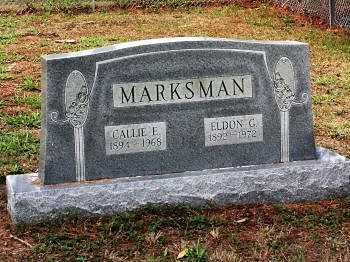UMES students and visitors to the university often ask: “Why is there a cemetery on campus?”
The truth is … little is known about its origins but official Methodist Church documents offer one explanation.
The campus cemetery is the final resting place for three early instructional leaders when the institution was known as Princess Anne Academy: Benjamin Oliver Bird (1853 -1897), Portia E. Lovett Bird (1859-1899), Thomas Henry Kiah (1873-1936) and his first wife, Mary (1879-1918).
Benjamin Bird died in his early forties; his headstone says his date of birth was Aug. 11, 1853. Minutes of a meeting of the Methodist Episcopal Church’s Delaware Conference, however, took note of Bird’s passing and reported his birthday as Aug. 14, 1855.
His funeral was attended by Blacks and whites alike as he was one of the community’s most highly respected citizens.
Bird’s headstone reads:“God knows the way. He holds the key. He guides us with an unerring hand. Sometime with tearless eye we’ll see up there. Some day, we’ll understand.”
His wish was to be buried on campus, according to those same church conference minutes, which read, “After less than 42 years of life he rests, where asked to be placed, under the spreading oak.”
The tree did not survive, but Bird’s modern-day grave marker is etched with a likeness of a spreading oak. Cypress trees that once lined a path to the cemetery behind Waters Hall on the south side of campus also did not survive.
Bird’s wife, Portia, assumed the duties of Academy principal after his death and served in the post for two years. She was 40 when she died.
Like the Birds, Kiah also died in office. He suffered a cut to his leg in late December 1936 and was taken to the hospital Salisbury, where he developed complications and succumbed to blood poisoning on Dec. 30. Kiah was 64. He is buried alongside his wife, the former Mary Roberta Townsend of Stockton, Md., who died 18 years earlier at age 39.
Funerals for the Birds and Thomas Kiah were held at Metropolitan Methodist (Episcopal) Church in Princess Anne.
UMES’ cemetery, along with the buildings ringing the Academic Oval, was included in a designated historic district the federal government’s National Register of Historic Places approved in 2005.
Cemeteries on college campuses are not unheard of; Tuskegee, Hampton, Clemson and Notre Dame are among other universities that have them.
UMES’ cemetery is maintained by the university’s Physical Plant staff. A wreath is displayed on the wrought-iron fence that surrounds it and is usually placed there when the university celebrates Founders’ Week.
Two other graves are tucked away on a small plot off College Backbone Road on the east side of campus that was once the home of Dr. Eldon Marksman and his wife, Callie. Marksman was the campus physician in the early 20th century, and the university acquired his property for its acreage to accommodate agriculture research.
The simple, four-plot burial ground, perhaps one of the region’s smallest, is a gentle and spiritual reminder of the hard work and sacrifice of the institution’s trailblazers.



